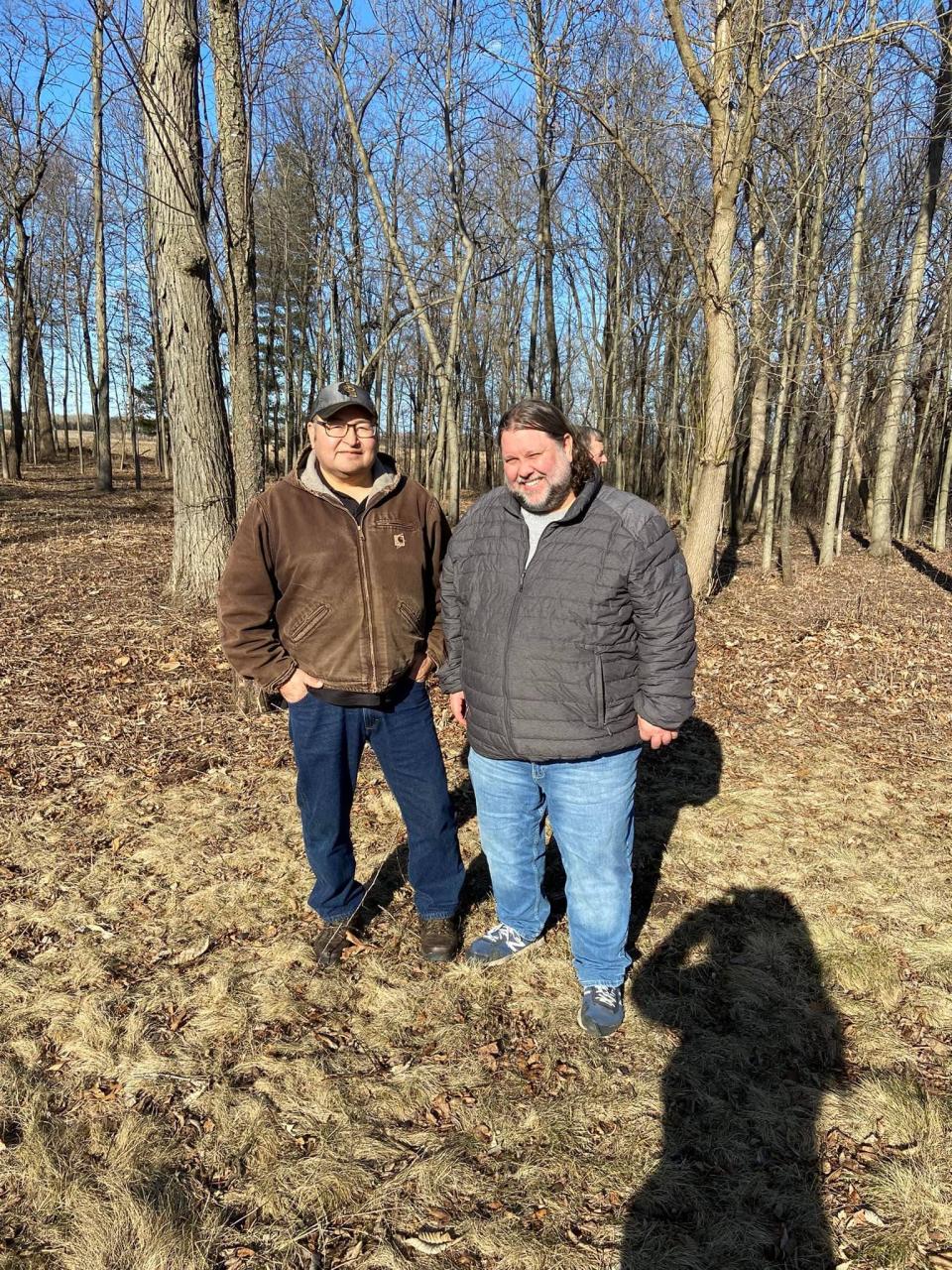New book explores Wisconsin's ancient Indigenous mounds
For one of the state’s preeminent experts on ancient Indigenous mounds, it made sense to Kurt Sampson to help write a book about the subject, focusing on a mound-rich region in Wisconsin.
It would be a book not only for seasoned archaeologists and academics, but also for laymen interested in Wisconsin history and its Indigenous-built mound systems dating back thousands of years.

The recently published book “Indian Mounds of the Horicon Marsh and Upper Rock River” is full of large images and maps of the mounds, information from historical and modern archaeology work, and explanations of belief systems of ancient Indigenous peoples pointing to why the mounds may have been built in the first place.
It was a project that Sampson nearly gave up on.
About 20,000 mounds were built in what is now Wisconsin from around 500 B.C. to around 1100 A.D. Only about 4,000 remain today because of the inconsideration of developers over the last 200 years.
A large number of those remaining mounds are in Dodge County, which is where Sampson focuses his research. The county also is home to Nitschke Mounds Park, which includes 37 animal effigy, conical and linear mounds built between 800 A.D. and 1100 A.D.
Sampson, a trained archaeologist, started working as the curator of the Dodge County Historical Society in 2008 and soon became friends with William Volkert, who founded the Rock River Archaeological Society in the area.
Sampson also organizes groups of volunteers called the Effigy Mounds Initiative to care for many of the mound sites in the state, clearing them of invasive plants brought by Europeans, such as buckthorn, which can damage the soil.
He and those he works with see a need to protect these ancient treasures, all of which are human burial sites, from further damage.
Volkert saw Sampson’s interest in the mound sites in the area and approached him about someday writing a book. Sampson was enthusiastic about it.
As an ecologist, but not an archaeologist, Volkert offered to write much of the book using Sampson’s scientific research about the mounds.
After Volkert retired in 2011, he started working on few smaller writing projects before planning to delve into the mounds book.
More: Man Mound is an ancient Indigenous site in Wisconsin. Why is a road cutting off its legs?
More: Group works to preserve ancient Indigenous burial mounds across Wisconsin
Then he started traveling around the world with his wife on birding trips and started writing books about that.
It wasn’t until 2020, when the pandemic created some downtime, that Volkert finally decided to take on the mounds book project. Sampson was still interested.
With the book at nearly 500 pages and in large print size to more easily view the photos and maps, Volkert and Sampson couldn’t find a publisher.
Publishers either thought the book wouldn’t sell or wanted to shrink the book in size and pages, which Volkert and Sampson weren’t willing to do.

Sign up for the First Nations Wisconsin newsletter Click here to get all of our Indigenous news coverage right in your inbox
So, they decided to self-publish. They’ve sold about 300 copies across Wisconsin and are considering publishing an updated, revised edition after new historical research about the mounds was discovered shortly after publishing.
Sampson has been selling the book out of his home, and it’s available at the Horicon Marsh Education and Visitor Center. He said it'll soon be available at local bookstores and possibly on Amazon.
Frank Vaisvilas is a former Report for America corps member who covers Native American issues in Wisconsin based at the Milwaukee Journal Sentinel. Contact him at fvaisvilas@gannett.com or 815-260-2262. Follow him on Twitter at @vaisvilas_frank.
This article originally appeared on Milwaukee Journal Sentinel: Wisconsin's ancient Indigenous mounds explored in new book

